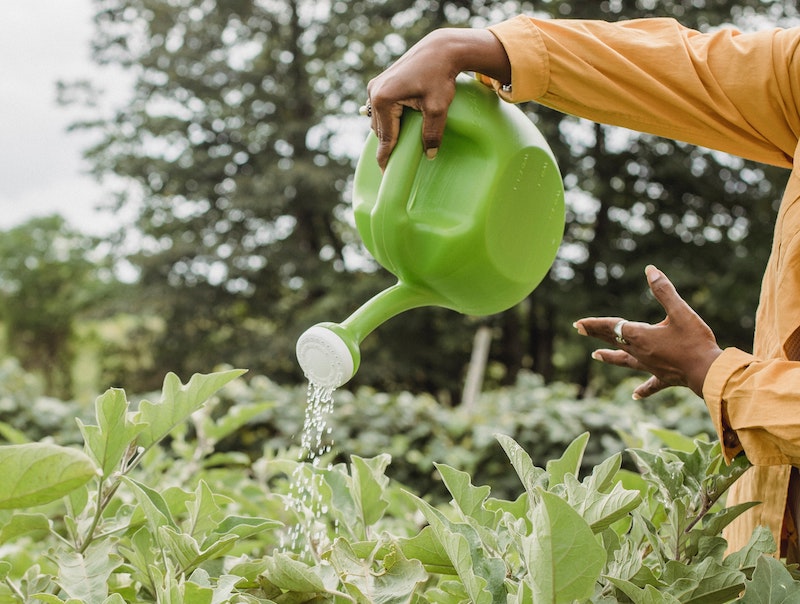All plants require light, air, and water to grow successfully in the garden. Water needs for perennials can be vastly different, ranging from plants that need constant moisture, like a water lily or pond iris to plants that require no supplemental irrigation from the gardener and thrive on dry, loose soils, such as yarrow or ornamental alliums.

How To Tell If Perennials Need to be Watered
The classic signs of dryness in perennials are leaf wilt, leaf curling, and tall stems flopping over. These signs indicate that the plant may need deep watering to revive it. Keep in mind that some of these signs can also indicate overwatering, so always test the moisture level of the soil before watering. Careful attention to even watering for the rest of the growing season will help the affected plant recover and re-emerge stronger the following season. More severe signs of dryness are flower buds that fail to open or drop off the stem, browning of the foliage, and complete dieback of the top growth. Perennials that become this dry may not survive the rest of the growing season.
On the flip side, perennials can also show signs of overwatering. Leaves turning brown and mushy, flower buds not opening, and dying back of the top growth are all signs of too much water around the roots. In most instances, these problems can be remedied by planting the perennial in a different location that aligns better with its water needs.

How Often To Water Perennials
Most perennials develop drought resistance or drought tolerance once they are established well in the soil. Some perennials will take more than one growing season to develop a strong root base and require supplemental watering. At planting time, all plants need to be ‘puddled in’ by watering the root zone until water stands on the soil surface. After the water soaks in, apply more water to ensure that the whole rootball has been saturated. Water regularly 2-3 times a week to keep the soil moist until the plant thrives.
As the perennials mature, watering can be significantly reduced. Allow for one inch of water a week, either from rain or supplemental irrigation. Watering deeply once a week will help the roots grow farther down in the soil and become more protected from soil temperature changes or periods of dryness. Drip irrigation and soaker hoses are a great way to keep the water off the foliage. Native perennials or hybrid cultivars of native plants may not need supplemental watering during the growing season if planted in the correct location.
Container-grown perennials require watering multiple times a week. Check the potting medium for dryness before watering. Water until liquid runs from the bottom of the container, ensuring the soil is evenly saturated. The top 2-3 inches of soil can dry between waterings without hurting the plant.

Best Time To Water Perennials
Watering is best done as early in the morning as possible. Soil that is still cool from nighttime temperatures and morning dew is more receptive to watering than hot, dry soil. Perennials may require watering during an unusually dry fall or even winter in USDA zones with temperatures above 45 degrees F.
How to Water Perennials
Step 1 - Water thoroughly at planting time.
Puddle in all plants as they are planted, and keep the soil consistently moist until the plant shows signs of vigorous new growth.
Step 2 - Water once a week after the plants are fully established.
Provide supplemental water once a week, if necessary. One inch a week is sufficient for most perennials.
Step 3 - Mulch the root zone with 3-4 inches of mulch.
Annual mulching of the root zone ensures that the soil retains moisture longer and keeps the root zone cool in the summer months.
Perennial Watering Tips
- Choose the correct location for the plant.
- Water newly planted perennials regularly until they are fully established.
- Supplemental watering of established perennials may be needed once every 7-10 days.
 |
Author Robbin Small - Published 1-12-2022 |
